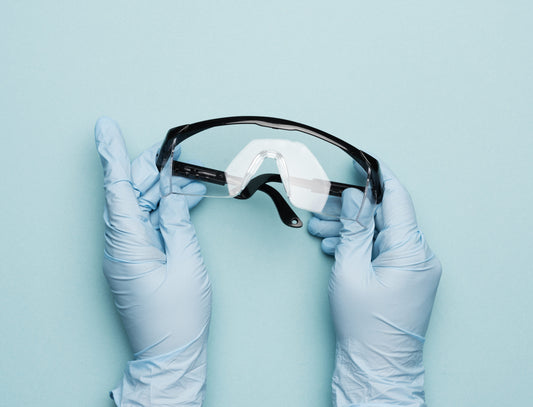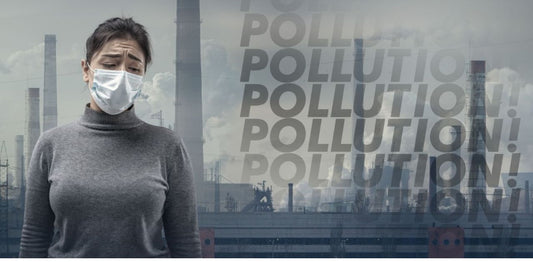
Is My Mask Really Effective? Yes – Here’s Why
Over the past year and a half, many people have gotten familiar with different levels and types of facemasks, ranging from non-medical disposable masks to N-95 masks. Each mask has a preferred usage and recommended environment, ranging from low-risk environments in which a non-medical disposable mask would be sufficient (like an outdoor park or back yard), to extreme-risk environments, in which a N-95 mask or higher would be required (for example healthcare professionals working in close proximity of COVID -19 patients). While having a basic knowledge of these levels can be beneficial in many ways, it can also be detrimental when it comes to figuring out what mask is best for you and how to wear them to best protect yourself. There is an endless number of internet blogs, articles, videos and more available to us each claiming that their method is the best when it comes to COVID-19 defense, but how can we be sure?
You may have seen people talking about double masking, adding a guard between your mouth and a mask, and even adding a protective layer over the top of the mask to provide extra protection. And while these are great options for some people, oftentimes they are not required, and a standard medical mask will do the trick. Why is this? Licensed medical-grade masks that are sold in Canada are required by law to adhere to strict rules and standards, including but not limited to:
- Meet certain standards in the following categories:
- Bacterial Filtration Efficiency
- Differential Pressure mm H2O/cm2
- Submicron particulate filtration efficiency at 0.1 micron
- Splash Resistance/Synthetic Blood Resistance
- Flame Spread
- Have three layers (our Premium Blue) manufactured in-house masks have an inner layer of spun-bond polypropylene, a middle layer of meltblown fabric and an outer layer of spun-bond polypropylene)
- Meet the international standards ISO 10993-5 + 10, ensuring that none of the materials used in the mask cause any harm to the wearer
These standards have been implemented by the American Society of Testing and Materials, or ASTM. ASTM designs these standards, backed by research, trials, and rigorous testing, and then once the standards are released, thousands of members across the globe have their products undergo the appropriate testing in order to get their products certified to said standards, including us. These standards not only focus on the protective qualities of the masks but also the breathability, material makeup, and overall comfort, assuring a final product that is both safe and wearable. It is incredibly important to ensure any medical masks you are purchasing have passed all standards outlined by ASTM in order to fully protect yourself against harmful bacterial and other substances.
Double masking does reduce the risk of coming into contact with airborne respiratory droplets, however this is mainly due to the second mask tightening the fit of the first mask, shrinking any gaps between the mask and your face. This can be just as easily replicated by pulling the earloops of your mask behind your ears and knotting them in such a way that the mask is pulled tightly against your face, closing the gaps that appear along the sides of your face. You could also use a UNIVERSAL FACE MASK BAND SUPPORT in order to adjust the fit of any facemask with ease. Both are viable options versus double masking, which raises two main concerns – extra layers in front of your face can potentially cause breathing difficulty, as well as the issue of waste. As we know facemasks have been in high demand since the start of 2020, and while we now are meeting that demand the waste being generated by the use of facemasks is worrying environmentalists everywhere – and so we should be doing our part to reduce that risk as much as possible.
The biggest takeaway here is to make sure that when you are sourcing and purchasing medical-grade facemasks, the appropriate certificates and test reports are available for the products indicating that they are following ASTM standards. While material and composition do play a factor to some extent, three layers of fabric in a mask is sufficient enough protection for majority of the population to be using on a daily basis, as many of us are rarely in high-risk environments, if at all. For further information regarding mask standards and correct usage of masks please check out the following links:
- https://www.cdc.gov/coronavirus/2019-ncov/prevent-getting-sick/mask-fit-and-filtration.html
- https://www.ctvnews.ca/health/coronavirus/another-layer-of-protection-feds-now-recommend-three-layer-masks-with-filters-1.5172995
- https://www.cdc.gov/coronavirus/2019-ncov/prevent-getting-sick/about-face-coverings.html
- https://blog.gotopac.com/2020/07/31/surgical-medical-mask-astm-requirements/
Check out our selection of Canadian-made masks and other PPE here (hyperlink to PPE/masks), and always make sure to wear a mask in enclosed spaces or whenever social distancing is not possible.







